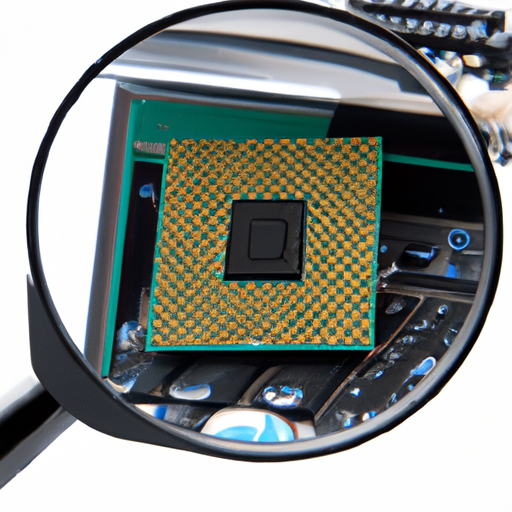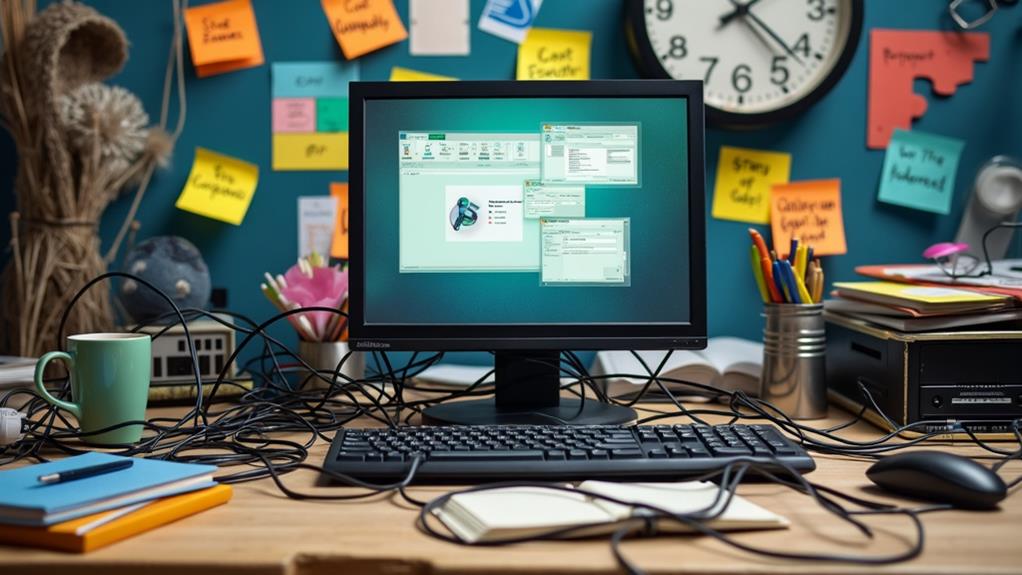



You’re about to uncover the answer to a burning question: can you overclock the processor in a mini PC? For tech enthusiasts and gamers seeking optimal performance, the prospect of pushing your processor beyond its factory settings may seem enticing. But what about compact and portable mini PCs, known for their space-saving design? Is it possible to boost their processing power through overclocking? In this article, we’ll explore the exciting world of mini PC overclocking and shed light on whether it’s a viable option for unleashing the full potential of your tiny computing powerhouse.
Factors to Consider
When it comes to overclocking the processor in a mini PC, there are several factors that you need to take into consideration. Understanding these factors will help you make an informed decision and ensure that you get the most out of your mini PC. From understanding processor specifications to considering power and cooling constraints, warranty and support, and the thermal design power (TDP), each factor plays a crucial role in determining the overclocking potential of your mini PC. Let’s dive deeper into each of these factors to gain a comprehensive understanding.
Understanding Processor Specifications
The first factor to consider before overclocking your mini PC’s processor is to understand its specifications. Processor specifications provide valuable information about the capabilities and limitations of the processor. This includes the processor clock speed, thermal limits, voltage range, and multiplier lock.
Processor Clock Speed
The processor clock speed refers to the number of cycles a processor can complete in one second. It is measured in megahertz (MHz) or gigahertz (GHz). Increasing the clock speed through overclocking can result in improved performance but may also lead to increased heat generation and power consumption.
Thermal Limits
Every processor has a maximum thermal limit that should not be exceeded to prevent overheating and potential damage. When overclocking, it’s crucial to monitor the temperatures to ensure that they stay within safe limits. If the temperatures go beyond the thermal limits, it can result in system instability or even permanent damage to the processor.
Voltage Range
The voltage range is another important specification to consider when overclocking a mini PC’s processor. Increasing the voltage can provide stability at higher clock speeds, but excessive voltage can cause increased heat output and reduce the lifespan of the processor. It’s important to find the right balance between voltage and clock speed to achieve the desired performance without compromising the longevity of the processor.
Multiplier Lock
Some processors come with a locked multiplier, which restricts the user from increasing the clock speed beyond a certain limit. Unlocking the multiplier can provide greater flexibility for overclocking, but not all processors support this feature. It’s essential to check whether your mini PC’s processor has a locked or unlocked multiplier before attempting any overclocking.
Power and Cooling Constraints
Power and cooling constraints are crucial factors to consider before overclocking a mini PC’s processor. Overclocking increases the power consumption and heat output of the processor, requiring additional power and effective cooling solutions to maintain stability.
Power Supply Unit (PSU) Capacity
Before overclocking, you need to ensure that your mini PC’s power supply unit (PSU) has sufficient capacity to handle the increased power requirements. Overclocking can significantly increase power consumption, and using an underpowered PSU can lead to instability and potential damage to the components. It’s advisable to use a high-quality PSU with a higher wattage rating to accommodate the additional power demands.
Cooling Solutions
Effective cooling is essential for maintaining stable overclocked performance. Overclocking generates more heat, which can shorten the lifespan of the processor or even lead to system failure if not properly managed. Installing additional fans, upgrading the CPU cooler, or using liquid cooling solutions can help dissipate the extra heat generated during overclocking and keep the temperatures within safe limits.
Mini PC Form Factor Limitations
Mini PCs often have limited space for cooling solutions, which can pose a challenge when it comes to overclocking. The compact form factor may restrict the airflow and make it more difficult to disperse the heat effectively. Before attempting to overclock, ensure that your mini PC’s case has sufficient ventilation and space for cooling components to avoid thermal throttling or overheating issues.
Warranty and Support
Overclocking your mini PC’s processor can have implications for the warranty and support provided by the manufacturer. It’s crucial to understand the manufacturer’s policy on overclocking before proceeding.
Manufacturer’s Policy
Different manufacturers have different policies when it comes to overclocking. Some may explicitly state that overclocking voids the warranty, while others may offer limited support or have specific conditions for overclocked systems. Familiarize yourself with the manufacturer’s policy to avoid any potential conflicts or loss of warranty coverage.
Voiding Warranty
Overclocking involves pushing the hardware beyond its rated specifications, which can increase the risk of component failure. Manufacturers often consider overclocking as a breach of warranty terms and may refuse to provide support or free repairs for any damages resulting from overclocking. It’s essential to weigh the potential loss of warranty against the benefits of overclocking before making a decision.
Possibility of Component Failure
Overclocking increases the stress on the processor and other components, which can raise the risk of premature failure. Although modern processors are designed to handle overclocking to some extent, pushing them to their limits can still result in a higher chance of component failure. It’s essential to be aware of these risks and consider them before attempting any overclocking.
Thermal Design Power (TDP)
Thermal Design Power (TDP) is an important specification that indicates the maximum amount of heat a processor’s cooling solution is required to dissipate. It represents the average amount of power the processor will dissipate under normal operating conditions. When overclocking a mini PC’s processor, it’s crucial to understand the TDP and its implications.
Understanding TDP
A higher TDP generally indicates more power consumption and heat generation. When overclocking, the TDP of the processor can increase further, putting additional stress on the cooling system. It’s important to ensure that the mini PC’s cooling solution can handle the increased TDP to maintain stable operation.
Thermal Management Challenges
Overclocking increases the thermal load on the processor, making effective thermal management crucial. The mini PC’s cooling solution needs to dissipate the extra heat generated during overclocking to prevent thermal throttling and maintain optimal performance. Investing in a high-quality cooling solution is essential to overcome these thermal management challenges.
Impact on System Stability
Overclocking puts additional stress on the processor and other components, which may impact the overall stability of the system. Increased heat output can lead to thermal throttling, system crashes, or even permanent damage to the hardware. It’s important to conduct thorough stability tests and monitor the system’s performance to ensure that overclocking doesn’t compromise the stability of your mini PC.
Overclocking Potential
Now that we’ve explored the different factors to consider before overclocking a mini PC’s processor, let’s delve into the benefits of overclocking, the potential performance gains, and the importance of benchmarking.
Benefits of Overclocking
Overclocking your mini PC’s processor can unlock a range of benefits that can enhance your computing experience. Let’s take a look at some of these benefits:
Increased Processing Power
Overclocking can significantly increase the processing power of your mini PC’s processor, allowing for faster and more efficient task completion. This is particularly beneficial for resource-intensive applications such as video editing, 3D rendering, and scientific simulations, where every bit of processing power can make a noticeable difference.
Improved Gaming Performance
Gamers can benefit greatly from overclocking their mini PC’s processor. Overclocking can result in higher frame rates, smoother gameplay, and reduced input lag, providing a more immersive gaming experience. It can also help achieve higher resolutions and graphics settings, allowing gamers to unleash the full potential of their mini PC.
Faster Rendering and Video Editing
Overclocking can significantly speed up rendering and video editing workflows. It allows for quicker rendering times, shorter video encoding, and smoother real-time editing. Content creators and professionals working with multimedia applications can greatly benefit from the increased processing power gained through overclocking.
Enhanced Productivity
Whether you’re multitasking, running multiple virtual machines, or performing complex calculations, overclocking can improve overall productivity. It reduces processing bottlenecks, minimizes lag, and enables faster data processing, leading to a more seamless and efficient workflow.
Performance Gains
When overclocking your mini PC’s processor, you can expect significant performance gains across various aspects of computer usage. Let’s take a closer look at the specific areas where these performance gains can be observed.
Frequency Boost
Overclocking increases the clock speed of the processor, resulting in a higher frequency. This frequency boost directly translates into faster performance, allowing tasks to be completed more quickly. From opening applications to running demanding software, every operation benefits from the increased frequency achieved through overclocking.
Application-specific Performance
Certain applications, such as video editing software or 3D rendering programs, heavily rely on processing power. Overclocking can provide a substantial boost in performance for these specific applications, reducing rendering times and improving overall responsiveness. Tasks that once took hours can often be completed in significantly less time, allowing you to be more productive and efficient.
Multi-threaded Workload
Many modern applications and games are optimized to take advantage of multiple processor cores. Overclocking your mini PC’s processor can improve performance on multi-threaded workloads, enabling tasks to be divided and processed simultaneously. This can result in faster compilation times, smoother multitasking, and better overall system responsiveness.
Benchmarking
Before and after overclocking your mini PC’s processor, benchmarking is essential to assess the performance gains and stability of the system. Benchmarking allows you to compare the performance of your mini PC in different scenarios and validate the improvements achieved through overclocking. Here’s what you need to know about benchmarking:
Choosing the Right Benchmarks
Selecting the right benchmarks is crucial to accurately measure the performance gains achieved through overclocking. Different benchmarks focus on different aspects of performance, such as CPU, GPU, or memory-intensive tasks. Depending on your specific use case, choose benchmarks that closely reflect the workload you expect to experience on your mini PC.
Comparing Overclocked vs. Stock Performance
After overclocking your mini PC’s processor, run the selected benchmarks to compare the performance against the stock configuration. This will help you understand the extent of performance improvement and evaluate whether the overclocking efforts are worthwhile. It’s important to repeat the benchmarks multiple times to ensure consistency and reliability of the results.
Stability Testing
Stability testing is an essential step in the overclocking process. It involves putting the system under heavy load and monitoring for any signs of instability, such as crashes or overheating. Stability testing helps identify the maximum overclocking limits that the system can handle while maintaining optimal performance without compromising reliability.
Conclusion
Overclocking the processor in a mini PC can provide significant performance gains and unlock the true potential of your system. However, it’s crucial to consider the various factors discussed in this article before proceeding with overclocking. Assessing the processor specifications, power and cooling constraints, warranty and support implications, and the thermal design power (TDP) will help you make an informed decision based on your needs and requirements.
It’s important to remember that overclocking carries risks, including the potential voiding of warranty and increased component failure. The balance between risk and performance must be carefully evaluated, and overclocking should be undertaken with caution. With proper consideration, testing, and monitoring, overclocking can enhance your mini PC’s performance, leading to improved processing power, gaming performance, rendering speeds, and overall productivity.
Disclosure: As an Amazon Associate, I earn from qualifying purchases.







